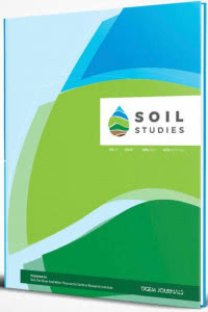Pressure calcimeter as a simple method for measuring the CaCO3 content of soil and comparison with Scheibler calcimeter
Pressure calcimeter, Calcium carbonate (CaCO3), soil analysis, Scheibler calcimeter.
Pressure calcimeter as a simple method for measuring the CaCO3 content of soil and comparison with Scheibler calcimeter
___
Horvath, B., Opara-Nadi, O., Beese, F., 2005. A simple method for measuring the carbonate content of soil. Soil Sci. Soc. Am. J. 69, 1066-1068.Kacar, B., 2012. Toprak Analizleri. Nobel Akademik
Yayıncılık Eğitim Danışmanlık Tic. Ltd. Şti., Ankara. 43-53.
Loeppert, R.H., Suarez, D.L., 1996. Carbonate and gypsum. 437—475.In D.L. Sparks et al. (ed.) Methods of soil analysis: Part 3—Chemical methods. SSSA Book Ser. No. 5. SSSA and ASA Madison, WI.
Martin, A.E., Reeve, R., 1954. A rapid manometric method for determining soil carbonate. Soil Sci. 79, 187—197.
Wagner, S.C., Hanson, D.J., Olness, A., Voorhess, W.B., 1998. A volumetric inorganic carbon analysis system. Soil Sci. Soc. Am. J. 62:690—693.
Williams, DE., 1948. A rapid manometer method for the determination of carbonate in soils. Soil. Sci. Soc. Am. Proc. 13:127—129.
Woodward, L., 1961. A manometric method for the rapid determination of lime in soils. Soil Sci. Soc. Am. Proc. 25, 248—250. I28
- ISSN: 2146-7072
- Yayın Aralığı: 2
- Yayıncı: Toprak Gübre ve Su Kaynakları Merkez Araştırma Enstitüsü
The quality of water used for irrigation of agricultural soil in the basin of Kolubara river
Radmila Pivic, Zoran Dinic, Dragana Josic, Aleksandra Stanojkovic Sebic
Study of classification and estimation models for soil loss disturbed by engineering construction
Duihu NİNG, Xiaoying LİU, Pengfei DU
Soil microbial biomass and gas-production activity (CO2) in Chernozems of different land use
Kristina Ivashchenko, Nadezhda Ananyeva, Vyacheslav Vasenev, O. Ryzhkov, V. Kudeyarov, R. Valentini
Soil erosion and conservation in two geomorphic and recreational environments
Cengiz Kaya, Osman Sönmez, Muhammed Ashraf, Tahir Polat, Levent Tuna, Salih Aydemir
Jacek Antonkiewicz, Robert Pelka, Agnieszka Kowalewska
Amina Richa, Abdelkader Douaoui, Naima Bettahar
İmre VAGO, Marianna SİPOS, Laszlo TOLNER, İmre CZİNKOTA, Gergely SZİLAGYİ, İbrahim ISSA, Janos KATAİ
Abdelkader DOUAOUİ, İbrahim YAHİAOUİ
Ali Şenlikci, Mustafa Doğu, Emel Eren, Ebru Çetinkaya, Sevinç Karadağ
